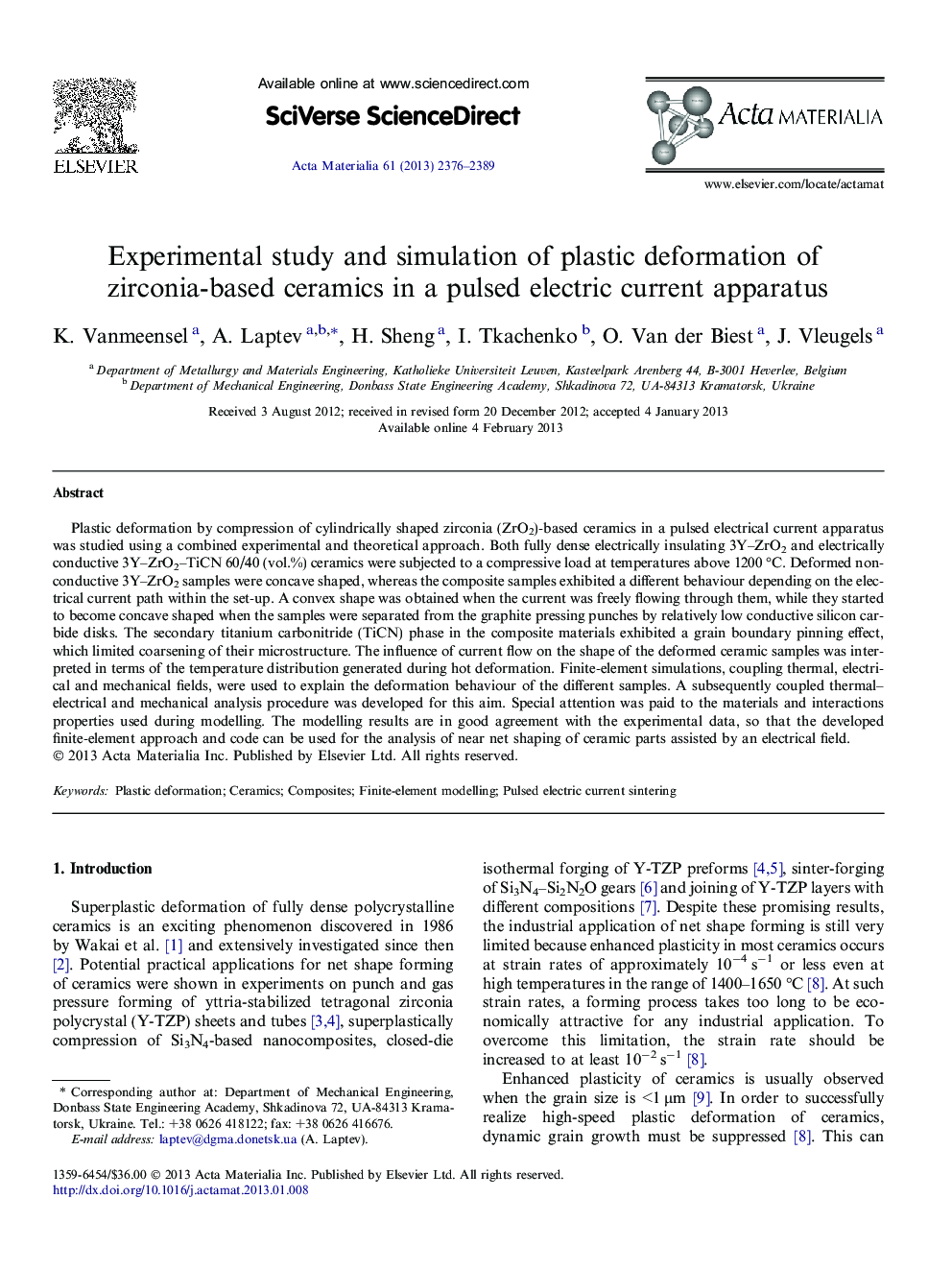| Article ID | Journal | Published Year | Pages | File Type |
|---|---|---|---|---|
| 10620186 | Acta Materialia | 2013 | 14 Pages |
Abstract
Plastic deformation by compression of cylindrically shaped zirconia (ZrO2)-based ceramics in a pulsed electrical current apparatus was studied using a combined experimental and theoretical approach. Both fully dense electrically insulating 3Y-ZrO2 and electrically conductive 3Y-ZrO2-TiCN 60/40 (vol.%) ceramics were subjected to a compressive load at temperatures above 1200 °C. Deformed non-conductive 3Y-ZrO2 samples were concave shaped, whereas the composite samples exhibited a different behaviour depending on the electrical current path within the set-up. A convex shape was obtained when the current was freely flowing through them, while they started to become concave shaped when the samples were separated from the graphite pressing punches by relatively low conductive silicon carbide disks. The secondary titanium carbonitride (TiCN) phase in the composite materials exhibited a grain boundary pinning effect, which limited coarsening of their microstructure. The influence of current flow on the shape of the deformed ceramic samples was interpreted in terms of the temperature distribution generated during hot deformation. Finite-element simulations, coupling thermal, electrical and mechanical fields, were used to explain the deformation behaviour of the different samples. A subsequently coupled thermal-electrical and mechanical analysis procedure was developed for this aim. Special attention was paid to the materials and interactions properties used during modelling. The modelling results are in good agreement with the experimental data, so that the developed finite-element approach and code can be used for the analysis of near net shaping of ceramic parts assisted by an electrical field.
Keywords
Related Topics
Physical Sciences and Engineering
Materials Science
Ceramics and Composites
Authors
K. Vanmeensel, A. Laptev, H. Sheng, I. Tkachenko, O. Van der Biest, J. Vleugels,
